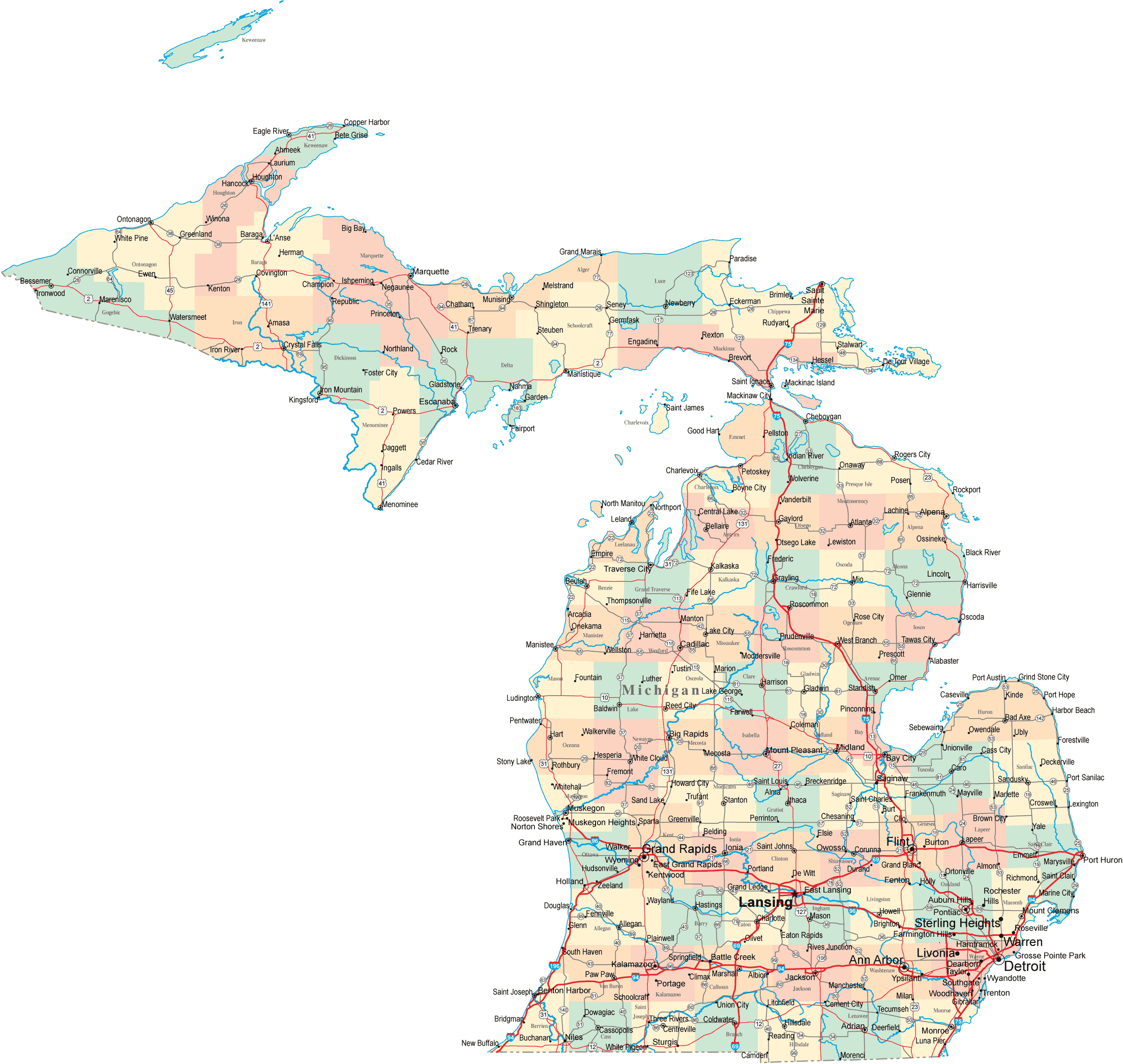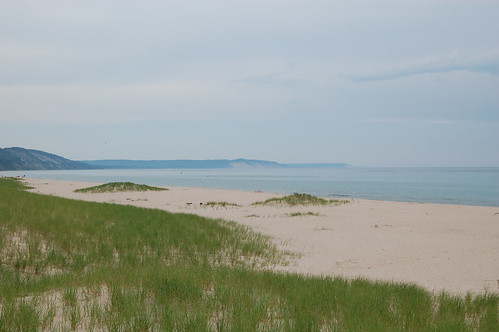Blue Highways: Midland, Michigan
Unfolding the Map
 Traveling past the huge Dow Chemical plant in Midland, William Least Heat-Moon (LHM) notes it and moves on toward the Thumb of Michigan. I'll reflect a little on chemicals that have become, like it or not, a part of our society and a part of us. Trace a chemical path to the map to see where Midland is located.
Traveling past the huge Dow Chemical plant in Midland, William Least Heat-Moon (LHM) notes it and moves on toward the Thumb of Michigan. I'll reflect a little on chemicals that have become, like it or not, a part of our society and a part of us. Trace a chemical path to the map to see where Midland is located.
Book Quote
"On a map, lower Michigan looks like a mitten with the squatty peninsula between Saginaw Bay and Lake Huron forming the Thumb. A region distinctive enough to have a name was the only lure I needed, but also it didn't hurt to have towns with fine, unpronounceable names like Quanicassee, Sebewaing, Wahjamega, or other names like Pigeon, Bad Axe, Pinnebog, Rescue, Snover, and - what may be the worst town name in the nation - Freidberger. People of the the Thumb have come from many places, but Germans and Poles predominate.
"I headed due east across the flat country, past the great industrial pile of Dow Chemical at Midland..."
Blue Highways: Part 7, Chapter 15
 Dow Chemical in Midland, Michigan. Photo by Bill Puglianno/Getty Images and seen at the Britannica website. Click on photo to go to host page.
Dow Chemical in Midland, Michigan. Photo by Bill Puglianno/Getty Images and seen at the Britannica website. Click on photo to go to host page.
Midland, Michigan
In the quote above, LHM references the Dow Chemical plant in Midland, Michigan. In fact, the chemical giant was actually founded there in the late 1800s. Throughout the 20th century, Dow Chemical and others like it led a revolution that ultimately helped bring about great advances in humanity's way of life. There was even a time when it was "sexy" to be in the chemical industry, as this Dow commercial from the 1980s shows.
Or so that's what we've been told. As we move into the 21st century, we more and more often see the dark side of the chemical revolution. Cancers and other types of illnesses are on the increase, some linked to chemicals invented in the 20th century and into which we put our trust. That which we create sometimes comes back to bite us.
I was thinking about our uneasy relationship with chemicals earlier today, before I started writing. Today is Easter, a day of resurrection and hope in the Christian tradition. I was in the shower and looking up to where some mold was growing on the ceiling thanks to the condensation that settles there day in and day out, and thinking that I need to wipe it down with a mold killer. The mold killer is, of course, a chemical. That chemical is potent enough that the instructions warn users to only utilize the product if the room is ventilated lest they breathe in and be overcome by fumes. That got me to thinking about how many chemicals I use to clean the bathroom. I use sprays to clean the toilet, sink and bathtub surfaces. I use a toilet bowl cleaner with a brush to clean the inside of the toilet. I use a floor soap with solvents in it to clean the bathroom floor tile.
That got me wondering about how many chemicals I use to clean the kitchen. Surface cleaners, stove cleaners, scrubbing chemicals for the kitchen sink, and soap with solvents for the floor. All of these chemicals near where I prepare my food and therefore, am probably ingesting.
But there's more. The food I eat is often pumped with chemicals to help preserve it. Farm-grown salmon, and many processed foods, are pumped with dyes to give them a correct and pleasing hue. Processed foods are laced with chemicals for all kinds of things. Not only food, but stuff I put on - the shampoos and soaps I use, the lotions that my wife uses, the sunscreen that I don't wear enough of - all has chemicals. We take some clothes to the dry cleaner so that they can be cleaned with all kinds of chemicals.
The water we drink is loaded up with chemicals, some intentional and some not. Fluoride, a chemical to help protect teeth is intentional. The chemicals that leech into water tables from farms and sewage are not. Agriculture uses chemicals for everything from re-energizing soils to killing weeds. These are poured willy-nilly over commercial farms and thus leech into the soil and then into us. Factories are supposed to properly dispose of used chemicals, but in the developing world they often don't, adding a whole new list of compounds into the environment that can pose short and long-term dangers.
I'm not trying to necessarily be anti-chemical. Our basic body functions such as the conversion of food and oxygen into energy is a chemical reaction. I've often heard that our basic emotions are complex chemical reactions that take place within our brains. Love, sadness, depression, joy are all chemistry within the individual human laboratory that is our unique bodies. We depend on chemicals to make us what we are. It may even have been a chemical reaction that started the chain of events that led to all life on earth.
But those chemical reactions occurred and still occur naturally. In a way, like we've done with other things, we came to see our ability to manipulate chemicals into helpful creations as a product of our genius. We saw chemicals and our abilities with them as a hope of humanity, almost worshiping the idea of them in religious terms. We could only see the upside of our efforts and many times, we didn't understand what the really long term consequences could be. That carelessness and hubris led to toxic waste dumps, Love Canal, dioxins in the environment, the development of cancers in many individuals because of long-term exposure to chemicals in their workplace or environment. Here's an example of what we didn't foresee - chemical resistant pests and weeds that have developed an immunity to the chemicals we dump on them, causing us to need to create stronger chemicals to fight them in a vicious circle. In the early 1900s, most of our bodies were free of man-made chemicals. Now, in 2012, we are saturated from chemicals that we ingest or which are absorbed through our skin. Cancers and other illnesses have risen, possibly offsetting some of the gains in life expectancy that chemicals have bought us.
Like any tool, chemicals can be helpful but if we don't pay attention or don't quite understand how to use them, they can really hurt us. As we learn about their benefits and costs, that knowledge helps but unfortunately, we often don't learn until we are exposed. I think about when I was a kid, and my father and I would routinely throw plastic items on our campfires. Of course, you can't help but breathe in the smoke from those campfires, now made toxic by burning plastic. The place where we camped, at our property in Northern California, was near a railroad and we often took the old ties that were discarded by the railroad and burned them. They burned really well and very hot and we sat around that fire and breathed in the smoke. Those ties were treated with creosote, which may possibly have adverse health effects on people.
Dow Chemical is at the epicenter of what is possibly the worst tragedy associated with chemicals, the Union Carbide Bhopal, India disaster, when chemical and gas leaks from a pesticide plant killed at least 3,000 people instantly and perhaps another 8,000 from exposure. Dow now owns Union Carbide and is responsible for the ongoing civil and criminal litigation. We have used chemicals to build our society, and some of the seeds for that society were laid in Midland, Michigan. We may celebrate our progress through chemical manipulation, but we also may yet rue what Dow, and other companies like it, have wrought for us.
Musical Interlude
This is a silly little ditty based on the periodic table of the elements, which lists all the chemicals known. Since Tom Lehrer wrote this song, there have been other elements discovered, but it still gives you an idea of all the chemicals that are out there and, most likely, in you.
If you want to know more about Midland
City of Midland
MLive.com
Midland Chamber of Commerce
Midland Daily News (newspaper)
Midland Online
Midland Tomorrow
Northwood University
Wikipedia: Midland
Next up: Bay City, Michigan
 Blue Highways,
Blue Highways,  Dow,
Dow,  Michigan,
Michigan,  Midland,
Midland,  Tom Lehrer,
Tom Lehrer,  William Least Heat-Moon,
William Least Heat-Moon,  cancer,
cancer,  chemical,
chemical,  illness,
illness,  revolution,
revolution,  road trip,
road trip,  tool in
tool in  Blue Highways
Blue Highways 










